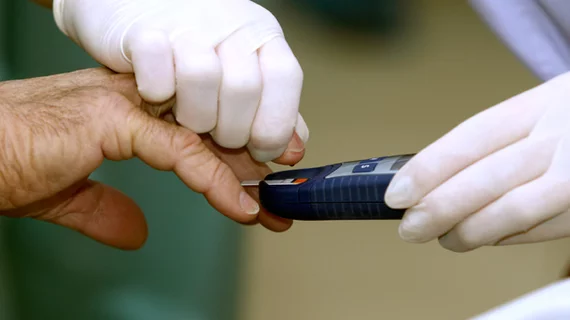Automated CT-derived markers identify those at higher risk of developing diabetes and other conditions
Automated CT-derived markers can help identify risk factors for conditions like diabetes before symptoms emerge and diseases progress, a new analysis in the journal Radiology suggests.
Identifying early indicators of diabetes was the focus of the new study, though researchers involved in the work discovered that automated quantifications of certain body components have utility beyond just diabetes; They can also predict the development of fatty liver disease, osteoporosis, coronary artery calcium and other cardiometabolic conditions. These measures could be utilized as an opportunistic screening tool in individuals who undergo routine health screenings, authors of the new study indicate.
“Given the significant burden of diabetes and its complications, we aimed to explore whether automated and precise imaging analyses could enhance early detection and risk stratification beyond conventional methods,” senior author Seungho Ryu, MD, PhD, from the Kangbuk Samsung Hospital at Sungkyunkwan University School of Medicine in South Korea, said in a news release on the findings.
For the study, experts retrospectively tested deep learning algorithms on a large cohort of more than 32,000 adults. Participants were 25 or older and had previously undergone a health screening via 18F-FDG PET/CT between January 2012 and December 2015. The algorithms were used to segment and quantify various body components visualized on the scans, including visceral and subcutaneous fat, muscle mass, liver density and aortic calcium.
The automated visceral fat index was highly capable of identifying individuals at risk of developing diabetes, achieving an AUC of 0.70 for men and 0.82 for women. Combining visceral fat, muscle area, liver fat fraction, and aortic calcification improved the predictive performance.
The AUC for visceral fat index in identifying metabolic syndrome—a group of conditions (hypertension, obesity, insulin resistance, etc.) known to increase the risk of diabetes—was also impressive, at 0.81 for men and 0.90 for women.
For fatty liver, coronary artery calcium scores greater than 100, sarcopenia and osteoporosis, AUCs ranged from 0.80 to 0.95, indicating that the utility of such automated analyses are far reaching, the authors suggest.
“The results are encouraging as they demonstrate the potential of expanding the role of CT imaging from conventional disease diagnosis to opportunistic proactive screening,” Ryu said. “This automated CT analysis improves risk prediction and early intervention strategies for diabetes and related health issues.”
The study abstract is available here.

